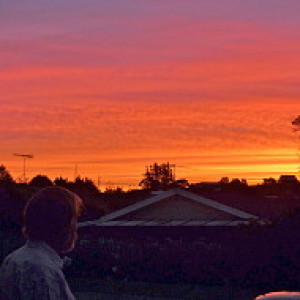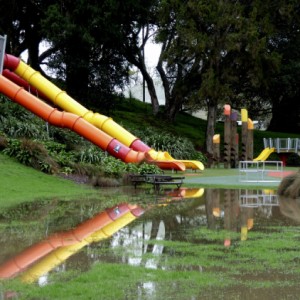Te Waka Taumata O Horotiu (2008)
Te Waka Taumata O Horotiu (which translates as Resting Waka) is a sculpture in corten steel and stainless steel, by Fred Graham a sculptor who once played rugby for the NZ Maori team. The sculpture is located on the corner of Queen Street and Swanson Street in Auckland (Tamaki Makaurau), marking the site of the foreshore before reclamation.
The sculpture soars 7m upwards in an open pedestrian space among the high rise Buildings of Auckland’s CBD. It is a symbolic representation of the waka (Maori canoes) that once lined the shores of Tamaki Makaurau. The sculpture consists of a Taurapa (stern post) and a Tau-ihu (prow). The prow on the sculpture is designed like a resting bird with its head facing towards its tail. Towards the top of the stern post are a flock of stainless steel birds in flight.
The area where the sculpture is placed is historically important for Ngati Whatua and especially Ngati Paoa, two important local iwi..
Ngāti Paoa were once one of the most powerful and wealthy tribes in Aotearoa (New Zealand), occupying the most strategic land holdings in Tamaki Makaurau (including this area, which was once a beach where Waka were drawn up), giving them a great advantage in commercial trade with the arrival of European settlers. At the same time they negotiated treaties with neighbouring iwi. However, in 1821 they were forced to flee following invasion by northern tribes, particularly Ngapuhi. Subsequently, a series of epidemics and land confiscations (by the Government during the 1860s) resulted in the tribe becoming significantly impoverished by 1900. Nevertheless, they remain an important iwi.
Following the defeat of Ngati Paoa in 1821, Ngāti Whātua became the dominant tribe in the region, despite being defeated by Ngapuhi in 1825. In 1840, Ngāti Whātua offered land at Tamaki Makaurau to Governor William Hobson in the hope of attracting more European settlements and therefore more commercial and political opportunities for the tribe. In response to the offer Hobson moved the capital of New Zealand to the area and named it Auckland in 1841 in honour of Lord Auckland. In 1865 Parliament (and the capital) was moved to Wellington.
I have added an extra, taken when I had a late afternoon run to, and through, Western Park.
ADDITIONAL: Fred Graham is one of the eight sculptors who contributed to the creation of the Auckland Domain Sculpture Walk, which I have recently completed blipping at least one photograph of each.


Comments
Sign in or get an account to comment.


